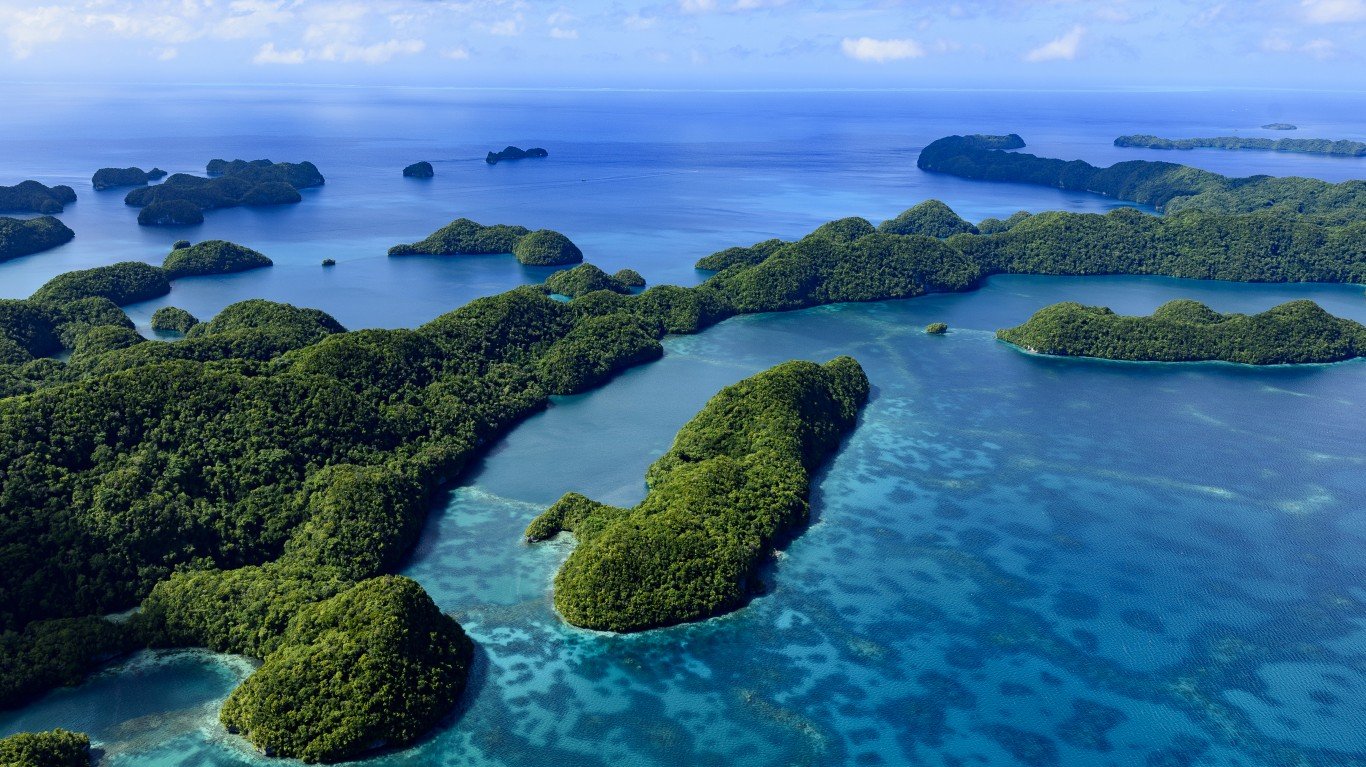
6. Palau
> 2018 Population: 17,907
The sea level has risen in Palau, a country of about 700 islands, by about 0.35 inches, or 9 mm per year since 1993, about three times the global average rise, according to research by the Pacific-AustraliaClimate Change Science Program. The accelerated rate may be due to natural weather phenomena that occur periodically such as the El Niño-Southern Oscillation. Sea level is expected to rise between 5.5 and 13.8 inches by 2050, depending on the amount of global greenhouse gas emissions released into the atmosphere.
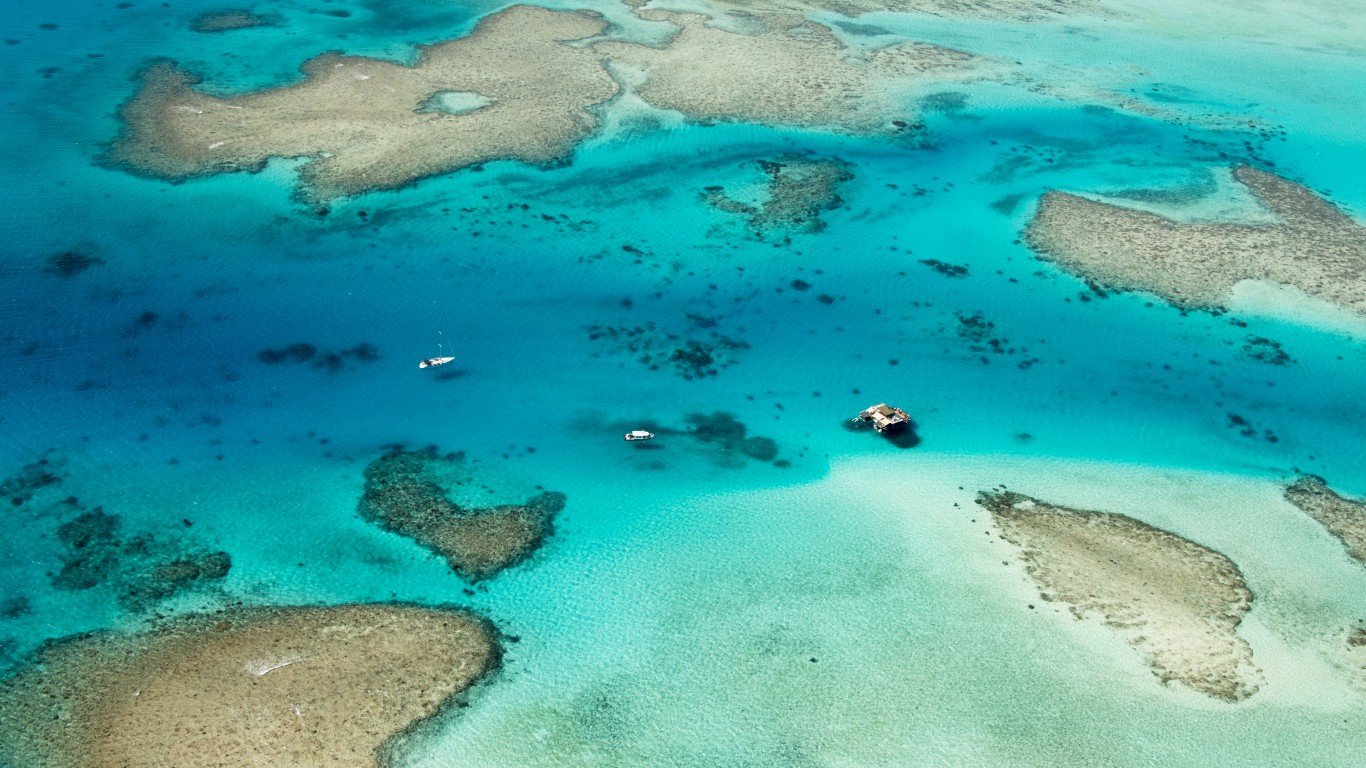
7. Fiji
> 2018 Population: 883,483
Fiji, a popular honeymoon destination consisting of about 300 islands in the South Pacific, is at the mercy of climate change. Powerful tropical cyclones, erosion, and flooding are part of the reason the annual sea level in Fiji has been rising by an average of 6 mm per year since 1993. In 2012, the entire population of one village abandoned its homes and relocated to higher ground.
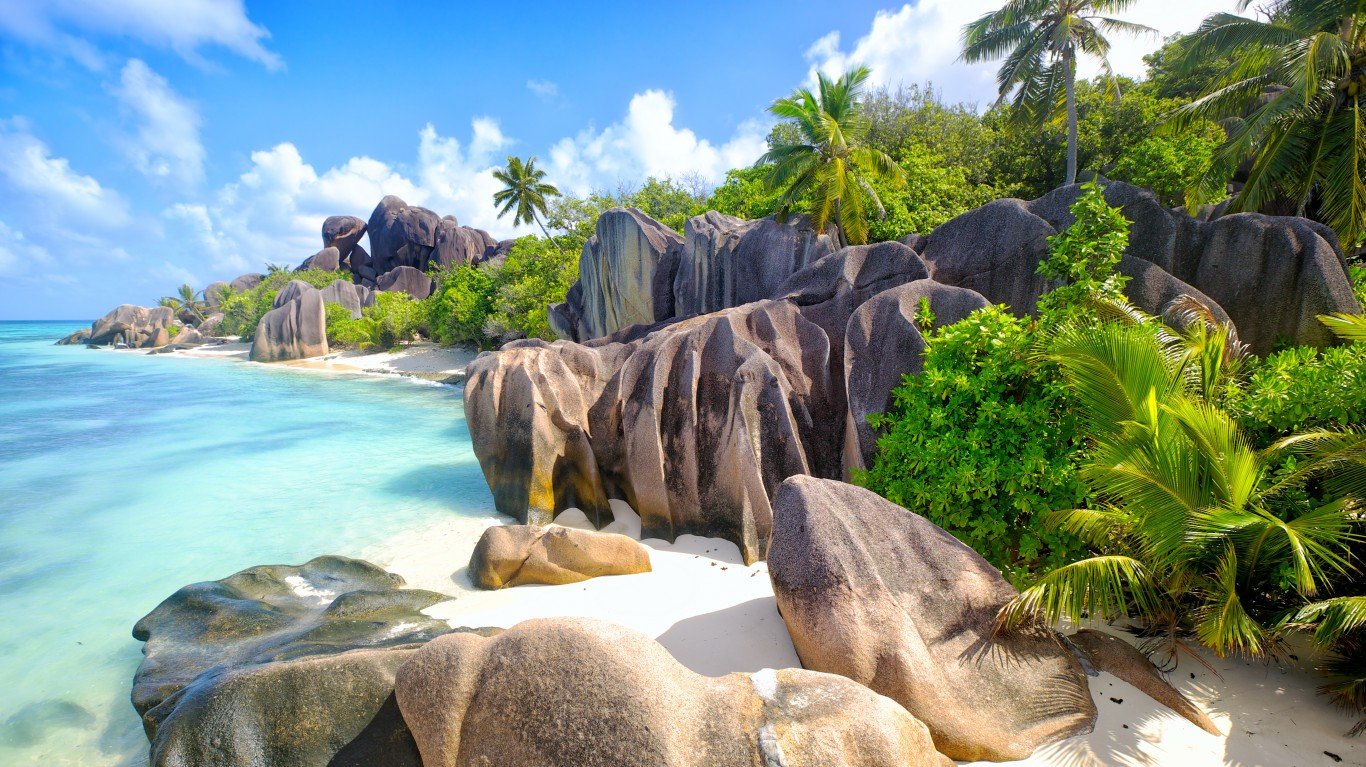
8. Seychelles
> 2018 Population: 96,762
The 115-island archipelago in the Indian Ocean is primarily a tourist destination — but its beaches are eroding. Theoretically, just one meter (39 inches) of sea-level rise may sink 70% of the nation’s entire land. So far, the annual sea-level rise in the Seychelles has fluctuated, but between 2002 and 2006 there were five instances when it reached almost 4 inches due to extreme storm events and flooding.
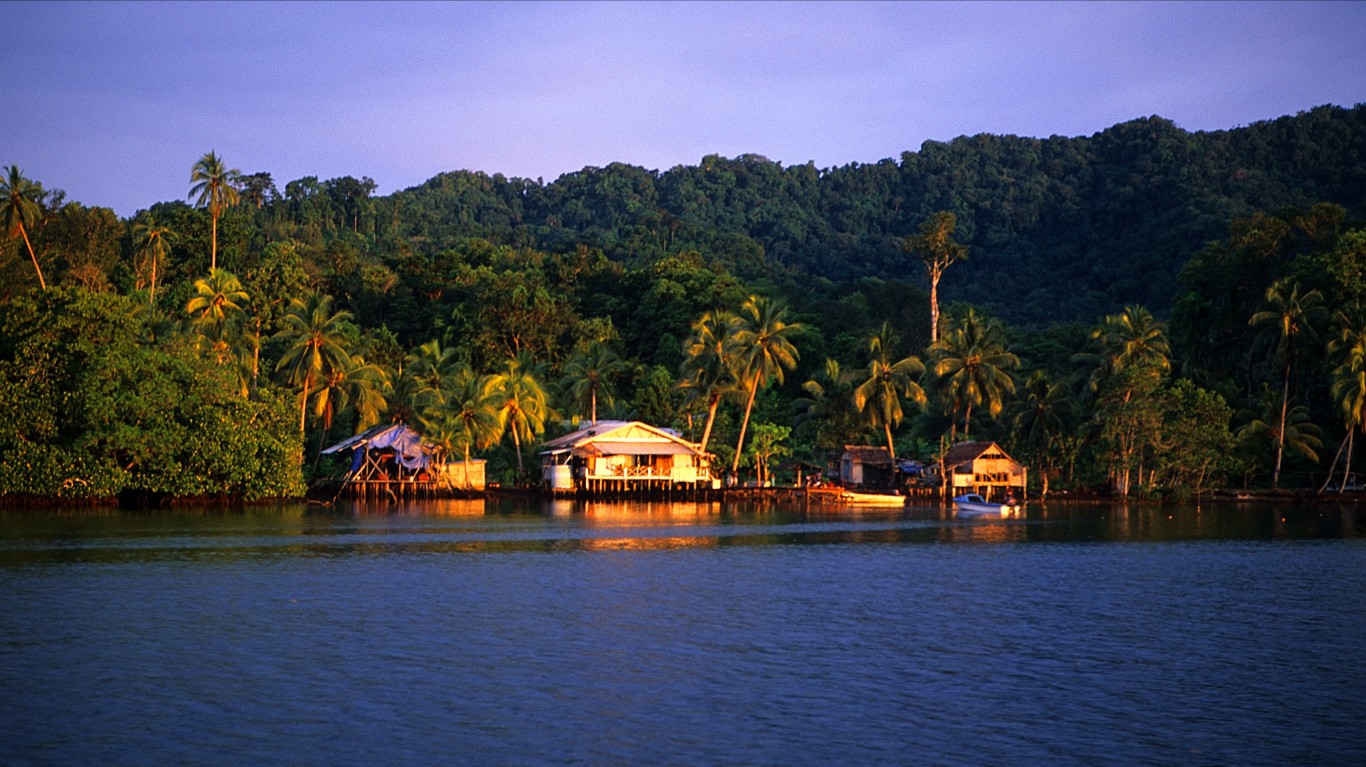
9. Solomon Islands
> 2018 Population: 652,858
Solomon Islands, a country comprising six major islands in the South Pacific, has already lost five reef islands because of sea level rise and erosion caused by climate change, according to a 2016 study published in Environmental Research Letters. The sea level has been rising in the Solomon Islands archipelago by 10.1 mm, or 0.4 inches, per year. Villages have been forced to relocate because much of their inhabitable land is now under water.
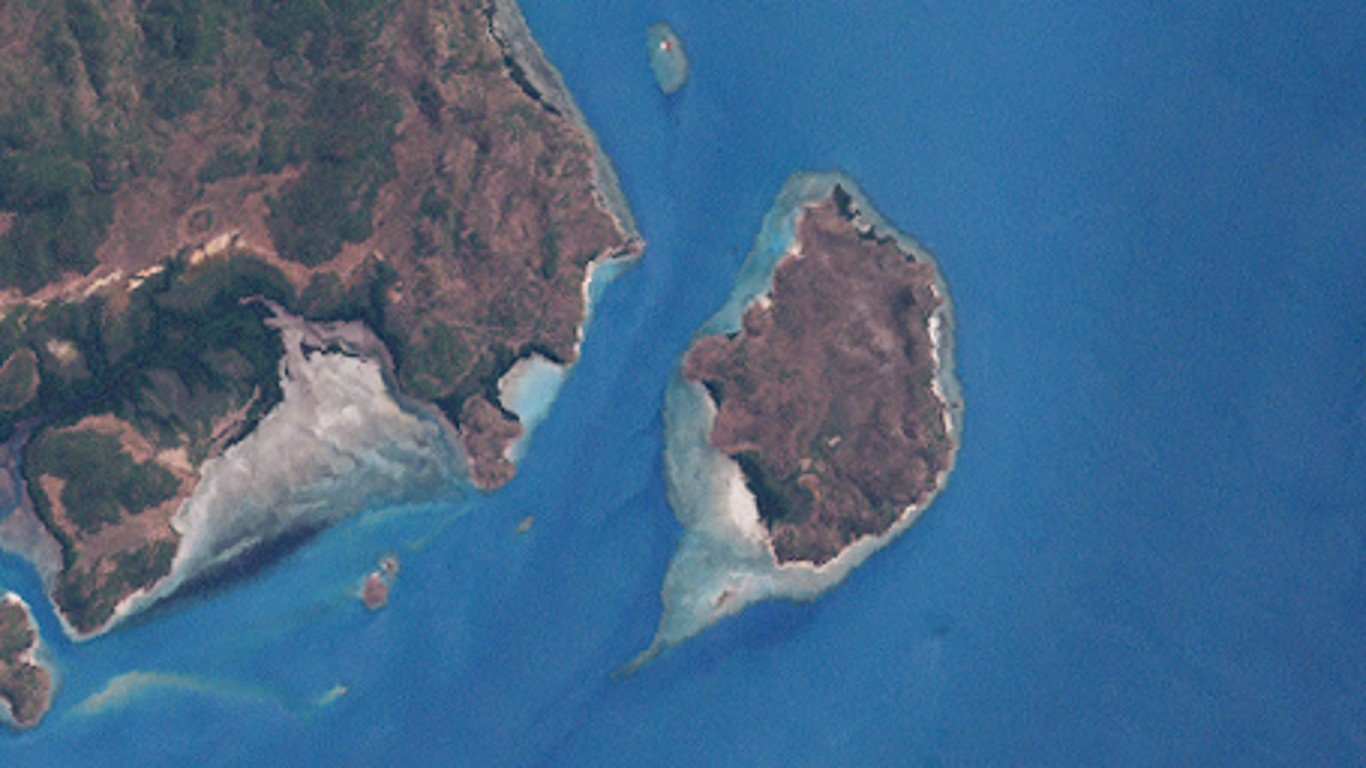
10. Torres Strait Islands, Australia
> 2016 Population: 4,514
Sea levels around the Torres Strait Islands are rising at an average rate of 6 mm to 8 mm per year, almost triple the global average of 3.1 mm sea-level rise. The ocean water has become warmer and more acidic due to increasing levels of carbon dioxide, and this has also sped up erosion as the acid in the water reacts with minerals in the land. Local governments have organized many climate change workshops to develop and adapt plans to deal with the threat of rising sea levels.





